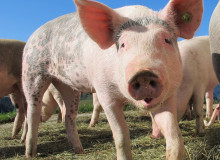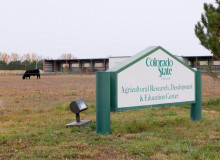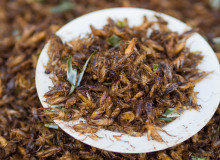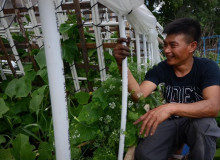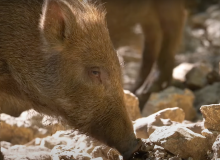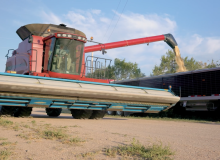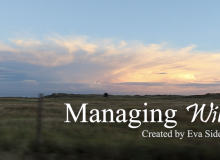food
George Washington University
This short documentary explores fishing of the Potomac River in Washington D.C., where regulations allow fishers to consume portion of their catches, despite warnings from local river-keepers.
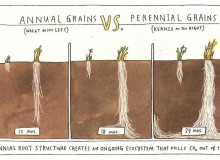
Standard annual grain roots vs. perennial grain roots of the Kernza grain. (The Land Institute/CC-BY-NC-ND)
Michigan State University
Perennial grains will change the agriculture landscape as we know it and take us one huge step closer to halting climate change.
Medill News Service
In arguments before the U.S. Supreme Court, California and the National Pork Producers Council debated California’s move to ban the supply of pork from producers who fail to meet strict animal welfare requirements.
Planet Forward Correspondent | Colorado State University, Center for Science Communication
In this video, AgNext's Dr. Kim Stackhouse-Lawson and Dr. Sara Place discuss the future of sustainable animal agriculture.
George Washington University
Experts discuss the “endless” possibilities of meat-alternatives and sustainable products at SciLine’s “Future of Food” media brief.
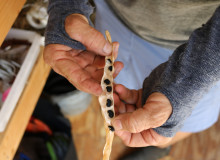
Robin Clemmons rips apart a pod of black beans, demonstrating that not many people may realize where crops, like black beans, actually come from. These bean pods need to be dried before volunteers can shell them by hand — in a days work, it's tricky to fill a plastic shopping bag. (Carter Weinhofer/Eckerd College)
Planet Forward Sr. Correspondent | Eckerd College
Food security is a growing issue, but small-scale agriculture can be a catalyst to aid in large-scale food movements.
Planet Forward Correspondent | Northwestern University
Global Garden Refugee Training Farm in Chicago makes space for refugee farmers to grow traditional fruits and vegetables, while also integrating local cultivars. One farmer shares what he grows in his farm plot.
Planet Forward Correspondent | Texas Tech University
Controlling invasive species can be costly and time-consuming. Watch this video to learn how including them on your plate could be a viable way to manage and even reduce populations.
Planet Forward Correspondent | Colorado State University, Center for Science Communication
Colorado farmer, Roy Pfaltzgraff, reflects on the challenges he faces as a farmer, how he has adapted, and the importance of consumers understanding food production.
Planet Forward Correspondent | SUNY Environmental Science and Forestry
Can eating meat save the planet? In this short documentary, ranchers and scientists at McGinley Ranch discuss regenerative ranching practices and ecological economics.


